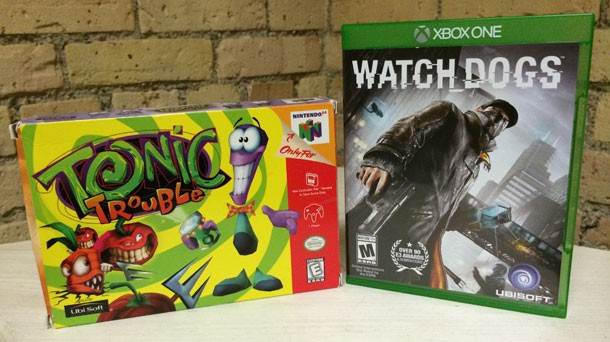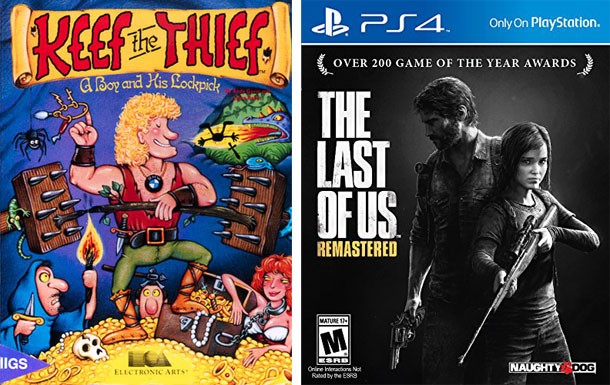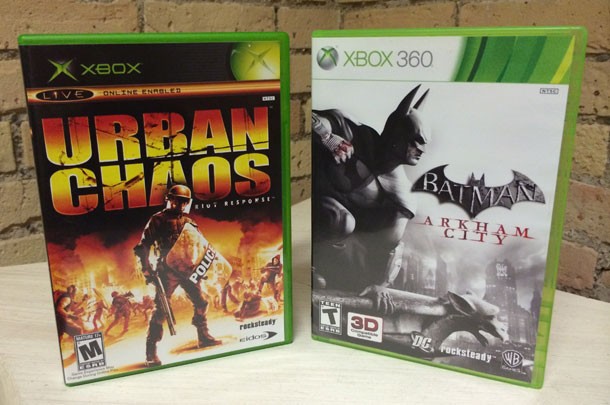From First To Last – Comparing Developers’ Early Work To Later Work

Development studios, even highly successful ones, like to change things. As the old adage goes (I assume), if it ain’t broke, try something different to see if that also works. Studios like Naughty Dog may have made a name for themselves with a jumping cartoon bandicoot named Crash, but that doesn’t mean it can’t evolve to eventually launch one of the darkest games of the previous generation. Naughty Dog is not alone in its desire to change. Many studios have changed dramatically from their earliest iterations, and below are a few examples.

Ubisoft Montreal – Tonic Trouble / Watch Dogs
Ubisoft Montreal is a huge multi-studio collective with its
hands in a number of impressive triple-A franchises, like Watch Dogs, Far Cry,
and most importantly Assassin’s Creed, but its beginnings are little more
subtle. And colorful.
Its first game, released in 1999, was a PC and Nintendo 64 platformer called Tonic Trouble, or as I like to call it, “That one game I always looked at, but never actually rented from Blockbuster.” The game stars the lovestruck Ed, who is likely a relative of Ubisoft’s own Rayman as he has no limbs, taking on the evil vegetable monster menace he accidentally created.
Ubisoft Montreal’s most recent title, Watch Dogs, takes place in real world Chicago where players play as the hacker with a score to settle, Aiden Pierce. Pierce has all of his limbs, and knows his way around a gun just as well as he does a keyboard.

Naughty Dog – Keef the Thief / The Last of Us
Crash Bandicoot is the game players think of when pondering
Naughty Dog’s first game, but it wasn’t its first game. After making games like
Math Jam, Ski Crazed, and Dream Zone as Jam Software, it changed its name to
Naughty Dog and launched Keef the Thief.
Released in 1989 for the Apple IIGS, Keef the Thief is a medieval adventure RPG where players fight enemies, explore dungeons, and collect gold. As a thief searching dungeons and finding gold, Keef could have laid some of the groundwork for Nathan Drake in Uncharted.
Naughty Dog’s most recent game The Last of Us, on the other hand, is about grounded people in a terrible situation trying to survive in a modern world overridden by a terrible and dangerous disease. It also looks a lot sharper.

Bungie – Gnop / Destiny
Bungie has one of the most radical long-term transformations
of anyone on this list. It began its life owned by Apple trying to help the
computer manufacturer sell its machines as capable gaming platforms.
Eventually, the studio was purchased by its direct competition, Microsoft, to
help establish its own emerging gaming platform (the Xbox) before it partnered
with Activision to become the company it is today.
Before Halo, before Marathon, before fantasy titles like the Myth series, and before military shooters like Operation: Desert Storm and Pathways into Darkness, Bungie released a little Pong clone called Gnop. I will let the creativity of that name sink in while you also consider that Bungie is one of the most highly regarded developers in the industry.
Bungie’s most recent game by technicality is Halo: Reach, but with the beta behind us and Destiny’s released right around the corner, it’s hard not to call out its new science-fiction, future space-shooter, which is slightly larger and more impressive than a Pong clone.

Rocksteady Studios – Urban Chaos: Riot Response / Batman:
Arkham City
The Arkham series are considered some of the best licensed super-hero
action games, and are also some of the best games in general. There was a time
though, shortly before the release of Arkham Asylum, where people had low
expectations for the series. Batman’s video game triumphs were few and far
between, and it didn’t help that Rocksteady Studios didn’t have much to show
for itself.
Three years before the release of Batman: Arkham Asylum, Urban Chaos: Riot Response released on PlayStation 2 and Xbox. In the game, you play as a riot response soldier with a shield tasked with protecting firefighters and other important city-saving personnel. We gave the game a 7.75, saying it was worth a look, but didn’t offer a particularly memorable or spectacular experience.
Fast-forward five years, and Rocksteady releases Batman: Arkham City, the most fully-realized interactive version of Gotham City ever committed to a disk. After conquering comics, TV, and movies, Batman was finally able to add video games to his expanding list of dominated media.

Blizzard – RPM Racing / Hearthstone, Diablo III: Reaper of Souls
Today, Blizzard is a giant in the industry, consistently
dominating the PC world. It even moved into the tablet world with Hearthstone,
and though it was no stranger to the console world, it only takes a quick
glance at your PlayStation 4 friends list to see it is doing something right
with the next-gen port of Diablo III.
Before all that though, Blizzard dabbled in the world of racing with RPM Racing. Shorthand for Radical Psycho Machine Racing, the Super Nintendo game did not feature elves, orcs, space marines, or even demons. Instead, it was just a racing game, albeit a radical one. While it may not exist in a high-fantasy, or rich science-fiction world, it does retain Blizzard’s insistence on filling the game with narrative for those who wish to seek. In the game’s booklet are two pages of story detailing why the races are so dangerous and how they’ve evolved. You can read the whole story yourself below.

These days, Blizzard is in a perpetual state of releases with some games in beta, some out in the wild, and some receiving re-release ports to new platforms, like Diablo III: Reaper of Souls. For most of us though, we’ve still got Hearthstone on the brain, which is slightly more intricate than a Super Nintendo racing game.

Get the Game Informer Print Edition!
Explore your favorite games in premium print format, delivered to your door.
- 10 issues per year
- Only $4.80 per issue
- Full digital magazine archive access
- Since 1991









